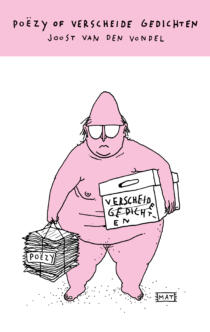Trijntje Cornelis is the only play that Huygens’ wrote. He is mainly known as a poet, diplomat and composer. His poetry was first collected in 1658 in a volume titled Korenbloemen (Cornflowers), which also includedTrijntje Cornelis.
Huygens sets the action shortly after the Peace of Westphalia (1648), the treaty that put an end to the Eighty Years’ War. As a result, trade borders reopened between the North and South Netherlands. We learn from the prologue of Trijntje Cornelis that the eponymous main character is a young captain’s wife from Zaandam, who embarks on a business trip to Antwerp together with her husband, Klaas Gerritszoon. While Klaas and his assistant Kees unload the cargo, Trijn goes for a walk in the city. However, the Calvinist woman understands nothing of Catholic morals or the Antwerp dialect. When she wishes to see the Spanish fortress, she accidentally ends up in the prostitute’s quarter. Thus begins the first act.
What follows is a rapid succession of vivid scenes, in which the whore Marie winds the naïve Trijn around her little finger and eventually manages to get the Dutch captain’s wife dead drunk. Together with the pimp Francisco, she robs her of her clothes and jewellery. Francisco then dumps the unconscious Trijn – wearing a page costume - in a heap of manure. When she wakes up, she suffers a tragicomic identity crisis: her outfit makes her think that she has turned into a man. But a night watchman takes her to her ship, where Kees greets her. The worried Klaas has drunk himself into a stupor and will never know about the whole sorry story. In the end, Trijn and Kees take revenge on Marie and Francisco and give them a taste of their own medicine.
According to Huygens, he completed Trijntje Cornelis in less than three days. This is typical of the sort of modest remark that was recorded in these sorts of text. That aside, the play has a classic structure: a comedy in five acts, in rhyming pairs of alexandrines, and with a tight unity of action and time. In terms of length (1572 verses), it is similar to the classic pieces of Vondel and Hooft. Huygens probably found inspiration for the material in the prose story Het Nieuwsgierig Aegje van Enkhuisen (Curious Aagje from Enkhuisen), which also takes place in Antwerp, during the Twelve Years’ Truce.
It is to Huygens’ great credit that he turned stereotypical comic characters into individualised characters. He also plays with language masterfully. Around sixty percent of the verses were written in the juicy Antwerp dialect, a language that Huygens knew well: his mother was an Antwerp native. One of the many charms of Trijntje Cornelis lies in the depiction of the differences between the Dutch and the Brabant natures: the rigid, Calvinist merchant mentality versus the more slippery, cunning one of the Burgundian Catholics. These regional differences are intersected by social contrasts. On opposing sides we have the decent merchant’s wife Trijn and the deceitful prostitute Marie: the disparity between the bourgeoisie and the lower class.
The louche setting of the play, the sexual and scatological allusions and the many dubious scenes ensured the comedy a bad reputation for centuries. In his foreword, Huygens himself wrote that it would be best if “dese vodderye” (this rubbish) was not performed in public and instead be kept as entertainment conducted behind closed doors. His wish was respected until… 1950! Only then – and in Antwerp of all places – did the piece at long last have its premiere.






